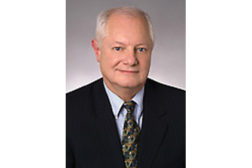Formulators
Applications for energy-cured coatings, adhesives and sealants have grown rapidly.
Read More
Handicapping the Field: How Next-Generation Solar PV Materials Will Emerge into the Market
The search is on for materials platforms that improve the conversion efficiency of solar panels.
November 1, 2014
CE Marking Compliance: Risks and Rewards for Sealant Manufacturers
Sealant manufacturers should be aware of the new harmonized European Standard for the construction industry.
November 1, 2014
Carbon Dioxide-Based Polycarbonate Polyols for Polyurethane Systems
PPC polyols are a sustainable, low-cost option with performance properties exceeding those of conventional polyols in polyurethane RHM adhesives.
November 1, 2014
Strategic Solutions: Tips for Successful Adhesives and Sealants Business Development
What is business development, and how do you increase the odds of success?
November 1, 2014
Regulatory Review: Signs of Potential Prop 65 Revisions and their Impact for the Adhesives and Sealants Industry
An explanation of some of the core elements of a Prop 65 revision currently under consideration.
November 1, 2014
Program Highlights for the ASC Fall 2014 Convention and Expo
The ASC Fall Convention and Expo will draw hundreds of visitors from around the world.
October 1, 2014
Selecting Adhesives: Converting Every Opportunity into Success
Knowing the basics of converting is helpful when choosing the best adhesive for an application.
October 1, 2014
Electron Beam Technology for Pressure-Sensitive Adhesive Applications
Ultraviolet and electron beam technology offers many benefits for PSAs, including environmental and application advantages.
October 1, 2014
IP in Depth: Avoiding Unnecessary Disclosures in Patent Applications
The distinction between disclosing how to practice an invention and explaining how an invention works is important to understand when drafting patent applications.
October 1, 2014
Keep the info flowing with our eNewsletters!
Get the latest industry updates tailored your way.
JOIN TODAY!Copyright ©2025. All Rights Reserved BNP Media.
Design, CMS, Hosting & Web Development :: ePublishing









